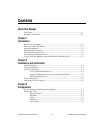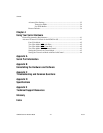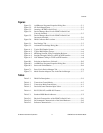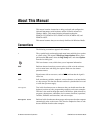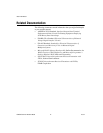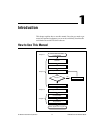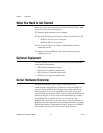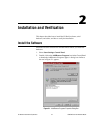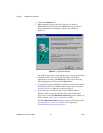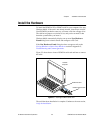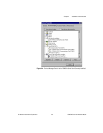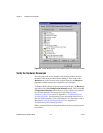
Chapter 1 Introduction
© National Instruments Corporation 1-3 PCMCIA Serial for Windows Me/9x
The PCMCIA-485 interfaces support four hardware transceiver control
modes for reliable communication with two-wire and four-wire devices.
Refer to Chapter 4, Using Your Serial Hardware, for more information
about transceiver control modes.
All of the serial hardware uses standard 16550-compatible UARTs
(Universal Asynchronous Receiver/Transmitters) for 100 percent
compatibility with standard PC COM ports. The serial hardware contains
FIFOs (First-In-First-Out buffers) for reduced susceptibility to interrupt
latency and faster transmission rates. Full Plug and Play compatibility gives
you the convenience of switchless configuration and installation. Refer to
Appendix D, Specifications, for more information about the serial
hardware specifications and operating conditions.
NI-Serial Software Overview
The NI-Serial software for Windows Me/9x includes a native Windows
device driver that provides full interrupt-driven, buffered I/O for multiple
COM ports. You can obtain a maximum baud rate of 115.2 KBaud.
You can also use any number of serial ports under Windows Me/9x.
The NI-Serial software also includes a configuration utility, which is fully
integrated into the Windows Me/9x Device Manager. For more information
about software specifications, refer to Appendix D, Specifications.
The NI-Serial software includes the following components:
• Device driver
• Diagnostic utility
• Configuration utility
• Product manuals
The NI-Serial software supports all National Instruments serial hardware,
including the AT, PCI, PXI/CompactPCI, and PCMCIA versions.




